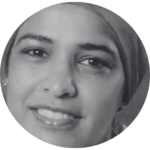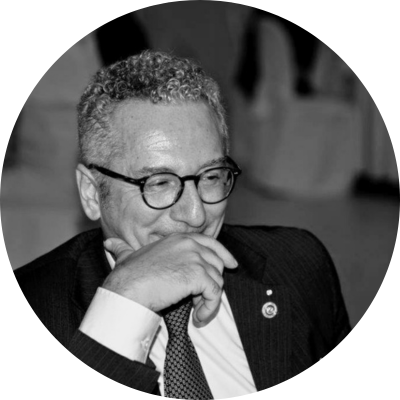
Social Media for a Positive Peace: Transnational Digital Resistance in Egypt
Twelve years have now passed since the outbreak of the Egyptian revolution that saw Tahrir Square flooded with millions of people chanting and calling for change. However, the system has not changed, remaining an authoritarian military regime. Yet, the government has developed new facets and features, including digital capacities.
The potential of digital technologies and social media
2011 has been a turning point for discovering the potential of digital technologies, and since the uprisings in several Arab countries a rich debate unfolded around the democratising power of social media. Facebook groups and online blogs represented vital spaces for civic participation and collective action in a repressive dictatorship such as Egypt under the ‘Pharaoh’ Hosni Mubarak. Hence, digital technologies and the related increased connectivity empowered dissident voices and supported the development of online communities demanding to reshape the social contract between state and citizenry. It is therefore not surprising that the April 6 Youth Movement, emerged as a Facebook page in 2008, was made up of internet-savvy Egyptians under 30 and that many of the known faces of the revolution are tech experts, such as the computer engineer Wael Ghonim and the software developer Alaa Abd El-Fattah.
The power lying underneath digital technologies became soon evident also to the Egyptian governing elite. For example, the amount of data provided by digital platforms is a valuable means to acquire information and collect knowledge on people’s ideas, preferences and activities. Egyptian authorities created the capacity for a pervasive digital surveillance system with profound implications for grassroots movements and political activism inside and outside the country. The Egyptian government is trying to institutionalize online repression, legitimizing the restriction of digital freedoms through draconian legislation like the 2018 media regulation law and cybercrime law. It goes without saying, this went hand in hand with laws and decrees restricting the public sphere offline, particularly a 2013 law on demonstrations and a law signed in 2017 limiting the work of NGOs.
Under the leadership of Abdel Fattah al-Sisi, while witnessing the fiercest crackdown on human rights in the country’s history, the regime joined the cat-and-mouse struggle for the primacy on digital technologies. As Steven Feldstein puts it, an eternal fight between autocrats seeking to exploit ICTs to maintain and intensify control on the one hand, and civil society and opposition exploiting the same tools against these regimes on the other. In so doing, the digital space has become a central target for (online) persecution, (digital) repression and crackdowns. In 2020, Manar Samy, a young TikTok influencer, was jailed with the charge of “inciting immorality and debauchery”, and similar charges were advanced to the TikTokers Haneen Hossam and Mawada al-Adham. Last Summer, many civil society organizations from Egypt and outside denounced the blockage and restriction of the Al-Manassa website, one of the few independent news sites in the country, on the part of Egyptian authorities.
Besides, the repressive grip has crossed Egypt’s borders and digital authoritarian practices have expanded beyond the national territory. Activists, students and scholars living abroad are intimidated and often arrested when entering the country, as was the case of Ismail Alexandrani in 2015, Inrahim Hagazi in 2017, and the sadly notorious case of Patrick Zaky in 2019. Overall, we are witnessing an increasing number of students and researchers based outside of the country that are subjected to travel restrictions, arrests and surveillance measures. This is being recognized as digital transnational repression.
A transnational repressive attack requires a transnational democratic response
Around 2014, when the repression against them intensified, a wave of intellectual dissidents and activists left the country and continued their activism in exile, founding organizations like the Cairo Insitute for Human Rights in Tunis, the Freedom Initiative in the United States, EuroMed Rights in Brussels, Egyptian Front for Human Rights in Prague, Committee for Justice in Geneva, and EgyptWide in Italy. Digital technologies, among many other things, have the power to link all these realities, by broadening geographical outreach and allowing communities to connect beyond borders in a transnational resistance movement.
Open Technology Fund reported in 2019 that Egypt’s strategy to control society relies on unsophisticated surveillance techniques. However, in 2020 the ICT sector has been the fastest growing in the country, with a spending increase of more than 15%. Hence, this could be a crucial time to act in the context of a cat-and-mouse struggle, investing, for example, in the potential of new technology to enhance grassroots resistance – what is called ‘sousveillance’ or ‘watch the watchers’, and leveraging on the possibilities for scaling engagement, improving collaborative multi-stakeholder decision-making, and eventually the opportunity to build a more inclusive and equitable society.
Technology can be used for the achievement of positive peace, which in brief can be defined as peace with justice. However, using digital technologies efficiently requires a plethora of technological, social and political factors, including the availability of electricity, access to ICT tools, and digital literacy.
At this critical moment, diasporas can, and often wish to be, of vital support for their communities within the country, and foreign governments and civil societies can contribute to supporting the diasporas under their jurisdiction by identifying those factors and working together to build a favorable environment and meet the necessary conditions to effectively fight for positive peace through digital technologies.
Dafne Carletti is the Press and Communication Officer of the Agency for Peacebuilding.































